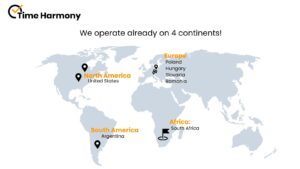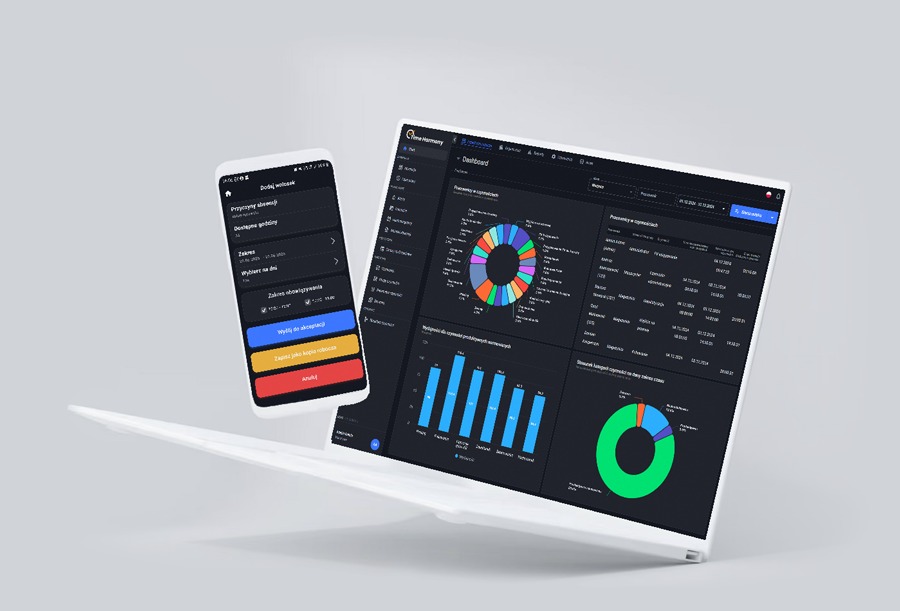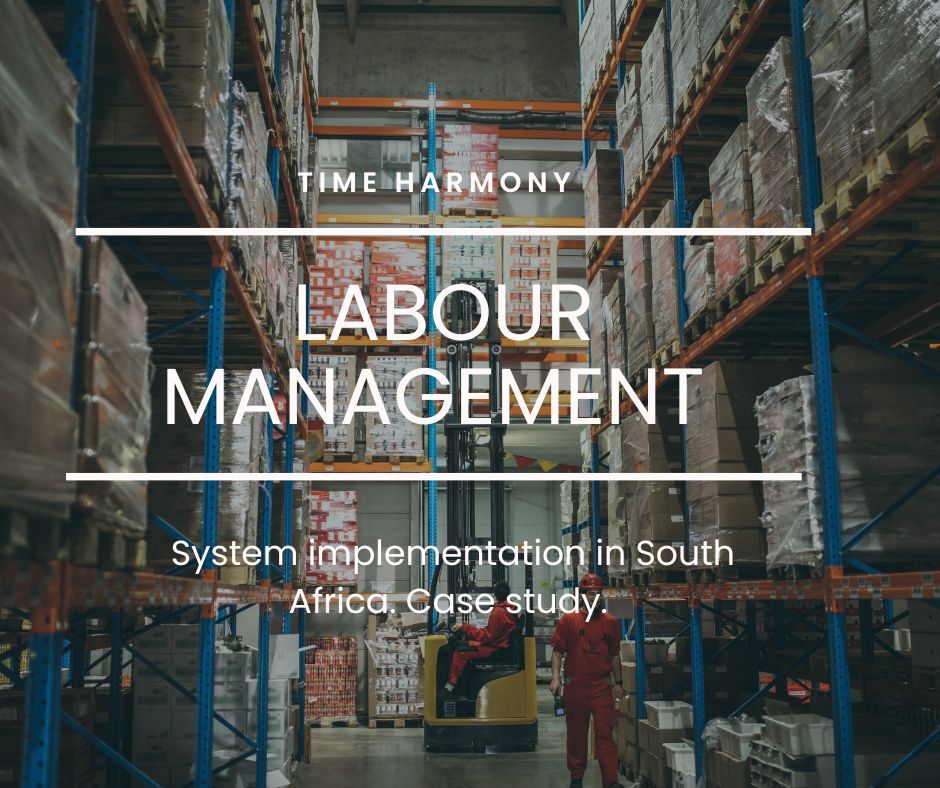Time Harmony is an LMS (Labour Management System) system successfully used in companies from the sector of warehouse and logistics operators.
The ability to measure the time of performed activities, assign activities to a specific customer, calculate the efficiency of employees in individual activities, and all this combined with the functionality of registration, full recording and settlement of working time, are the functionalities of the system that are perfect for warehouse analytics.
For one of our clients, a global transport and warehouse operator, as part of the implementation of an international #LabourManagement project ongoing in this organization, we implemented another instance of the system, this time in South Africa.
measuring the duration of activities, assigning activities to specific projects/orders/customers, measuring performance
Time Harmony – Labour Management System
Time Harmony perfectly fits into the assumptions of the project, which is to cover all locations where the client's logistics and warehouse centers operate. As part of the Labour Management project, the task of the Time Harmony system is to provide data on the activities performed, including the calculation of their duration, determination of workload, efficiency and identification of idle times. This data will be used for a comprehensive analysis of how working time is used in individual operational hubs and ultimately to indicate areas where it is possible to optimize processes.
Project implementation
The first country where we implemented our system was Poland. The data provided by the system turned out to be so valuable that it was decided to further implement Time Harmony in other European countries, North and South America, and recently it was the turn of one of the Client's warehouses in South Africa.
The Time Harmony system records data about the work process using built-in time zones, so analytical data is available in real time not only to the management of a given location, but also to the management staff at the Company's Headquarters. The system offers rich reporting based on recorded data.

Deployment in South Africa
As part of the implementation in South Africa, the Time Harmony system covered more than 110 warehouse employees. Employees, using the terminals provided by us, record the activities performed, which allows for accurate tracking of work efficiency. In addition, we have introduced a parameter that identifies for which customer a given activity is performed. This is crucial in the context of servicing several customers in one warehouse, which allows for precise settlement of the workload for each of them and optimal allocation of human resources to tasks.
At the beginning, this parameter is selected manually by employees, but the planned integration with the WMS (SAP) system will enable automatic collection of data on customers, quantities of goods and units (e.g. pieces, packages, pallets), which will streamline the process and minimize the risk of errors.
Labour Management System - Benefits of implementation
Already in the first days after implementation, the client noticed numerous benefits, such as:
- Increased work transparency – recording activities allows for better control over the implementation of tasks.
- Optimization of resource allocation – data on workload per customer allows for better planning and allocation of staff.
- Improve operational efficiency – by monitoring uptime and eliminating idle times.
Next steps
Depending on the progress of the project and the assessment of the benefits of implementation, decisions will be made regarding the potential expansion of the RPA project with more warehouses. In addition, already in the first days after implementation, the system showed that it can also be helpful in settlements with employees, based on data from reports on performed activities.
Employee Engagement
An important aspect of implementing the system is building understanding and acceptance among employees. The key role of managers responsible for the project on the Client’s side – supported by our experience from previous implementations – is to explain the business rationale and highlight the tangible benefits of Time Harmony. It is worth emphasizing that the system not only provides valuable analytical data for company management but also significantly improves work organization. It enables more balanced task allocation, evens out workload distribution, and fosters self-organization and self-monitoring in daily duties. As a result, employees gain a tool that genuinely supports their efficiency, contributing to fair recognition of their efforts and transparent performance-based rewards.

Optimize working time and efficiency of your team

